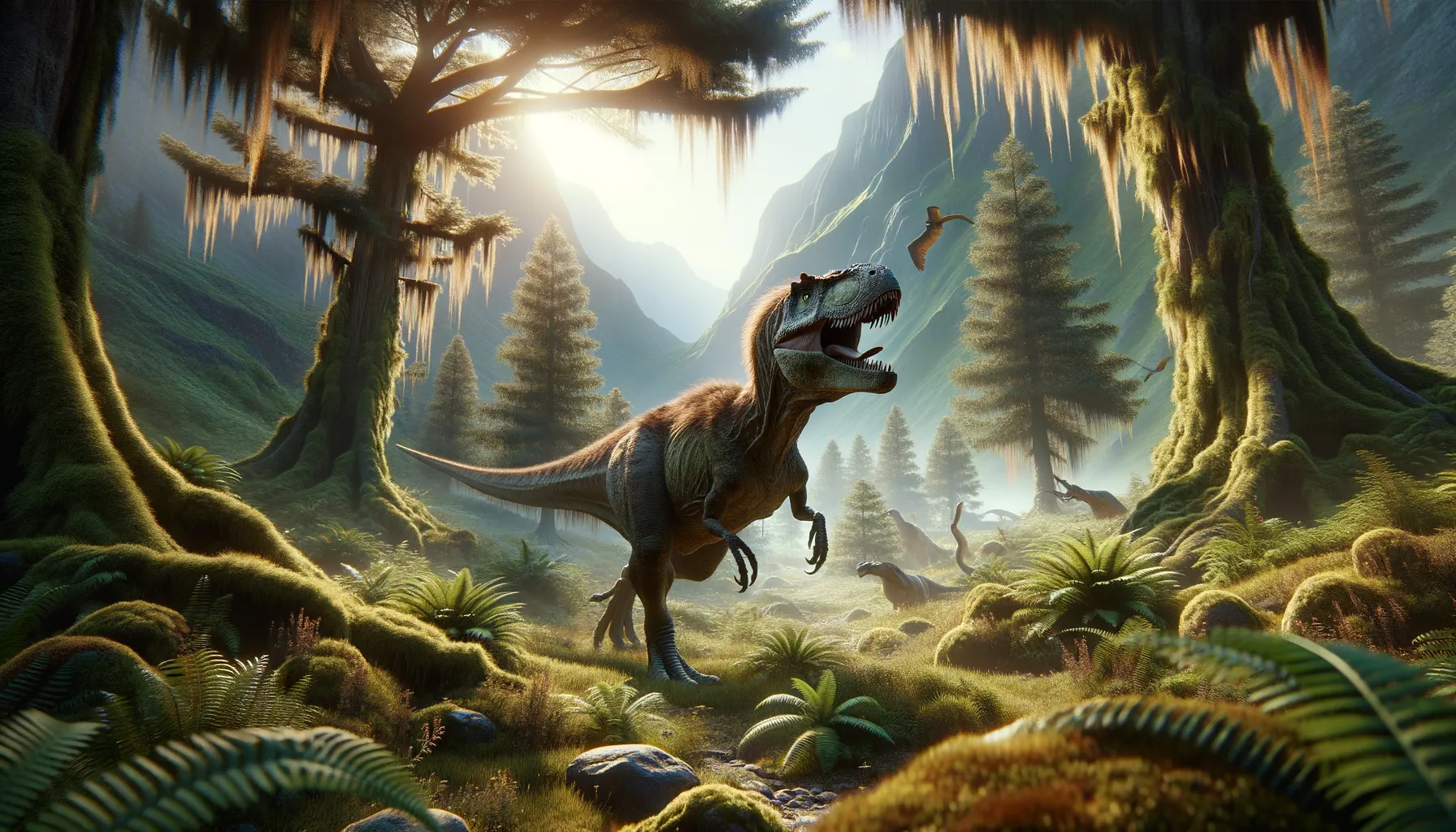
Suchoprion
Fossil hunter of ancient rivers.
Period
Cretaceous
Length
Could reach lengths of up to 8 meters.
Height
Approximately 2 meters at the hip.
Weight
Estimated to weigh between 500 and 700 kilograms.
Suchoprion was a medium-sized carnivorous dinosaur known for its impressive, sharp teeth and agile hunting capabilities. It roamed the Earth during the Cretaceous period, leaving behind a trail of fossils that have fascinated paleontologists for decades. Studies suggest it was a skilled hunter, using its senses and speed to capture prey effectively. Its discovery has provided valuable insights into the ecosystem dynamics of its time.
Diet
Suchoprion primarily fed on smaller dinosaurs and perhaps fish. Its sharp teeth suggest a diet that relied heavily on meat. It likely had to be both opportunistic and strategic to capture prey effectively.
Hunting
Hunting likely involved stalking and quick bursts of speed to catch its prey. It may have been a solitary hunter, sneaking up on unsuspecting victims by utilizing the cover of vegetation and its keen senses.
Environmental challenges
Suchoprion had to adapt to changing climates and resource availability. Seasonal variations could have impacted its food sources, requiring flexibility in prey selection. Coping with competition from other predators likely shaped its behavior and strategies for survival. Natural selection would have favored individuals with better adaptation skills to these challenges.
Speed
Likely moderate given its size and predatory nature.
Lifespan
Estimated to be around 20 to 30 years in the wild.
First discovery
Fossils first uncovered in early 20th century excavations.
Fun Facts
- Suchoprion is a dinosaur that lived during the Mesozoic era, which means it roamed the Earth millions of years ago.
- The name 'Suchoprion' comes from Greek words meaning 'crocodile saw,' likely referring to its sharp teeth.
- Fossils of Suchoprion have been discovered in North America, providing valuable insights into its habitat and lifestyle.
- Suchoprion was likely a carnivorous dinosaur, using its teeth to catch and eat other animals.
- Although not much is known about Suchoprion, researchers believe it might have been related to the Spinosaurus family.
- The environment in which Suchoprion lived was rich with rivers and lakes, making it an ideal spot for a crocodile-like predator.
- Suchoprion's unique teeth structure has helped paleontologists understand more about the diversity of predatory dinosaurs.
Growth and Development
As a juvenile, Suchoprion would have experienced rapid growth. These early stages were critical for developing the skills needed for hunting and survival. Social bonding with siblings might have occurred during the early years, aiding in learning behaviors. As it matured, its focus would shift toward independent hunting and territory establishment.
Habitat
Suchoprion thrived in riverine and forested areas with abundant prey. These environments provided the cover needed for hunting strategies. The presence of water bodies facilitated its potential piscivorous diet. The landscape was dynamic, requiring adaptability from Suchoprion for optimal survival.
Interaction with other species
Suchoprion likely faced competition from other carnivorous dinosaurs. It might have maintained a territorial range to minimize conflicts. Cooperative behavior could have occurred in managing territory or potential competition. Symbiotic interactions with carrion eaters might have helped in cleaning up after meals.
Natural lifespan
Under ideal conditions, it could live up to three decades.
Reproduction
Suchoprion likely laid eggs, with nesting sites strategically chosen for safety. Parental care is hypothetical, but some protection of the nest area might have been practiced. Its reproductive success depended on environmental stability and resource availability. Mating rituals could have included displays or calls to attract partners.
Social behaviour
While generally solitary, some level of social interaction during mating seasons is plausible. Solitary behavior likely helped minimize resource competition. Social hierarchies may have been fluid, depending on the individual. Interaction with conspecifics might have been limited to specific circumstances.
Fossil locations
Fossils have primarily been found in South American regions. Notable discoveries have occurred near ancient river sites. These locations suggest a preference for environments with water access. Ongoing excavations continue to provide insights into its distribution patterns.
